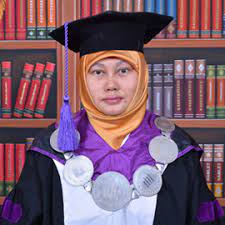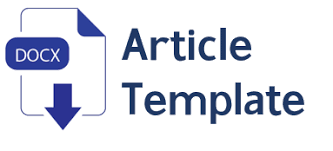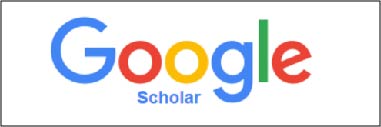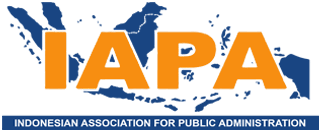COLLABORATIVE COMMUNICATION IN TALENT MAPPING OF CHILDREN WITH SPECIAL NEEDS IN INCLUSION SCHOOL
DOI:
https://doi.org/10.30997/jsh.v14i1.7305Keywords:
collaborative communication, inclusive, sekolah alam baturraden, special needs children, talentAbstract
The talents of children with special needs (ABK) that are detected and developed can become life skills. In the future, it is these life skills that make ABK productive, independent and able to contribute to their social environment. However, it requires the support and collaboration of parents and schools in recognizing and stimulating children's talents. This study aims to describe the process of collaborative communication between inclusive schools and parents in mapping ABK talent at the Baturraden Nature School, Purwokerto. Research using case study method. Data collection techniques were carried out by observation, interviews and documentation. Data were analyzed using Miles and Huberman's model. The results of the study show that Baturraden Nature School builds collaborative communication with parents of ABK students through dialogue, building trust, commitment and sharing understanding. Collaborative communication is carried out interpersonally and in groups through various activities, school programs and the use of communication media. Collaborative communication plays an important role in mapping ABK student talents. In the process found inhibiting factors and obstacles in collaborating. These obstacles should be overcome with intense dialogue, changes in behavior and mutually agreed solutions.
References
Anshell, C. and Gash. 2008. Collaborative Governance in Theory and Practice. Journal of Publik Administration Research and Theory, 18, 543-571.
Carpenter, M.A., Sanders, W.M, and Gerard. 2009. Strategic Management: A Dynamic Prespective, 2nd Edition. Pearson Printice Hall. New Jersey.
Covey, S. 1997. The Seven Habits of Highly Effective People. Covey Leadership Center. Binarupa Aksara. Jakarta
DeVito, J. A. 2012. The Interpersonal Communication Book (13th ed.). Pearson. New York.
Djumara, N. 2008. Modul 4 Pengembangan Budaya Kerja Aparatur, Diklat Teknis Manajemen Sumber Daya Manusia Pegawai Negeri Sipil (Human Resource Management). Lembaga Administrasi Negara Republik Indonesia. Jakarta.
Fadjria, A. 2019. Talents Observation. (T. J. Indonesia (ed.); 1st editio)
Fajra, M., Jalinus, N., Jama, J., & Dakhi, O. 2020. Pengembangan Model Kurikulum Sekolah Inklusi Berdasarkan Kebutuhan Perseorangan Anak Didik. Jurnal Pendidikan, 21 (1), 51-63.
Fani, N., & Zulmietri. 2021. Upaya Orang Tua Dalam Mengembangkan Bakat Anak Down Sindrom Di Bidang Renang Tingkat Nasional Di Yayasan Karya Inspirasi Mandiri. Jurnal Penelitian Pendidikan Kebutuhan Khusus, 9(1), 129-136
Fauzi, F. 2018. Pembentukan dan Transformasi Core Values di Sekolah Alam. Jurnal Ilmiah Visi, 13(1), 17 – 27.
Fauzia, L. V, & Persada, A. G. 2020. Rekonstruksi Media Sosial Instagram Sebagai Upaya Re-Branding Komunitas Kantong Pintar. Automata. From https://journal.uii.ac.id/AUTOMATA/article/view/15519
Fitri, N.L. 2019. Pemanfaatan Grup Whatsapp sebagai Media Informasi Proses Belajar Anak di KB Permata Bunda. Al-Hikmah: Indonesian Journal of Early Chilhood Islamic Education, 3 (2), 151-166
Heryani, R.D, Hudaya, A., & Kumala, I. 2018. Pemetaan Potensi Unggul Anak Usia Dini TK Tunas Kejaksaan. Jurnal Pengabdian kepada Masyarakat, 1 (3), 287-294.
Ilahi, M.T. 2012. Revitalisasi Pendidikan Berbasis Moral. Ar-Ruzz Media. Maguwoharjo.
Ilahi, M. T. 2013. Pendidikan Inklusi Konsep dan Aplikasi. Ar-Ruzz Media. Maguwoharjo.
Kadir, Abd. 2015. Penyelenggaraan Sekolah Inklusi di Indonesia. Jurnal Pendidikan Agama Islam, 3(1),1-22.
Kartika, S.M. 2022. Lazada Mother and Baby Festival Bantu Orang Tua Gali Potensi Anak. from https://jakarta.suaramerdeka.com/gaya-hidup/pr-1343733225/lazada-mother-and-baby-festival-bantu-orang-tua-gali-potensi-anak
Mangunsong, F. 2014. Psikologi dan Pendidikan Anak Berkebutuhan Khusus. LPSP Fakultas Psikologi UI. Depok.
McCarthy, Peter J., Brennan, Liran, Vecchiarello, & Karen. 2011. Parent–School Communication in the Inclusive Classroom: A Comprehensive Model of Collaboration in Education. International Journal of Humanities and Social Science, 1(15)
Minke, K.M, Sheridan, S.M, Kim, E.M, Ryoo, J.H, & Koziol, N.A. 2014. Congruene in Parent-Teacher Relationships. The University of Chicago Press Journals, 114 (4).
Nijs, S., Gallardo-Gallardo, E., Dries, N., & Sels, L. (2014). A Multidisciplinary review into the Definition, Operationalization, and Measurement of talent. World Business, 49(2), 180–191.
Patel H, Pettitt M, & Wilson J.R. 2012. Factors of Collaborative Working: A Framework for a Collaboration Model. Applied Ergonomics, 43 (1) : 1–26.
Pradani, T.S. 2011. Talents Mapping Assesments Result. From https://www.academia.edu/14837303/TALENTS_MAPPING_ ASSESSEMENT_RESULT
Putra, T.D. 2022. Observasi Bakat Menggunakan Aplikasi Talent Mapping untuk Orang Tua Siswa Sekolah Alam Tangerang. Journal of Computer Science Contributions. 2(1): 1-10.
Rakhmat, J. & Ibrahim, I. S. 2017. Metode Penelitian. Bandung: Remaja Rosdakarya
Royani, R. 2016. Talents Mapping Inspirasi untuk Hidup Lebih Asyik dan Bermakna. Tosca Book. Depok.
Saadati, B. A & Sadli, M. 2019. Implementasi Pendidikan Inklusi Berbasis Pengembangan Diri di Sekolah Alam Jogja Green School. Jurnal Elmidad. 11 (2):117-132.
Safar, M.P. 2016. Implementasi Kurikulum Sekolah Alam dalam Menjawab Tantangan Abad 21. Proceeding on International Conference on Economics, Education and Cultural Development of Moslem Society in ASEAN. 1: 94-104.
Santoso, H. 2018. Fitrah Based Education. Yayasan Cahaya Mutiara Timur. Bekasi.
Santrock, J.W. 2008. Psikologi Pendidikan. Jakarta: Kencana Prenada Media Group.
Sari, W. P. 2016. Implementing Inclusive Education in Schools to Instill Values of Humanism to Kids in Early Childhood (Case Study in School Alam Bina Taruna Sragen). Proceeding International Conference on Middle East and South East Asia (ICoMS) 2016.
Sefrina, A. 2013. Deteksi Minat Bakat Anak. Media Pressindo. Yogyakarta.
Sharma, U., & Michael, S. 2017. Parental perspective about inclusive education in the Pacific. International Perspectives on Inclusive Education. 10: 71-86.
Skjorten, MD. 2001. Towards Inclusion and Enrichment, Artikel in Johnsen. Unipubforlag. Oslo.
Syaifudin & Widiastuti. 2015. Evaluasi Pendidikan Inklusif bagi Anak Berkebutuhan Khusus (ABK) di Provinsi Jawa Tengah. Jurnal Penelitian Pendidikan. 32 (2): 119-126.
Sufianti, E. 2013. The Role of Traditional Leadership in Collaborative Processes: Javanese Leadership Case dalam de Vries and Bouckaert. Training for Leadership. Bruylant. Bruxelles.
Suhendi & Septriana, M. 2012. Belajar Bersama Alam. SoU Publisher. Bogor.
Tarmansyah. 2012. Pedoman Pengembangan Pendidikan Karakter Di Sekolah Inklusif. Direktorat Pembinaan Pendidikan Khusus dan Layanan Khusus (PK-LK) Direktorat Pendidikan Dasar. Padang.
Tran, G. 2022. 5 Best Ways To Effectively Promote Indonesian Websites. From https://gtelocalize.com/promote-indonesian-website/
Triwardhani, I.J, Trigartanti, W., Rachmawati, I., & Putra, R.P. 2020. Strategi Guru dalam Membangun Komunikasi dengan Orang Tua Siswa di Sekolah. Jurnal Kajian Komunikasi, 8 (1), 99-113.
Yuniatari, Y., & Na’imah, N. .(2021). Pengembangan Minat dan Bakat Anak Usia Dini Berkebutuhan Khusus. Aulad Journal on Early Chilhood, 4(2), 136-143.
Downloads
Published
How to Cite
Issue
Section
License
Copyright (c) 2023 Jurnal Sosial Humaniora

This work is licensed under a Creative Commons Attribution-ShareAlike 4.0 International License.
Authors submitting manuscripts must understand and agree to copyright the manuscript of the article was transferred to OJS Djuanda University. All rights reserved. The copyright release statement for the Journal of Social Humanities is set out in the Agreement Transfer of Copyright. This work is licensed under Creative Commons Attribution-ShareAlike (CC BY-SA) version 4.0 where Author and Readers can copy and redistribute material in any media or format , as well as mixing, modifying and building materials for any purpose, but they must provide appropriate credit (citing articles or content), provides a link to the license, and indicates when changes have been made. If you mix, modify, or develop, the materials you have to distribute your contributions are under the same license as the originals.
















